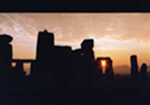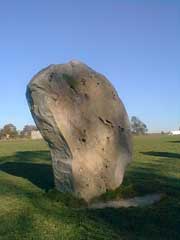
For historical details, photos and more about Stonehenge, go to:-
About Stonehenge
Stonehenge:
Visitor information:
- LONDON -
- SIGHTSEEING
- BUS TOURS etc
- BUS TOURS etc
Other ancient sites:
Links we like:
Click here OR
on these....
- Slow Travel - Explore this new site
- 100 best things to do in England
- Photographer of Light at Stonehenge
Notes and Books:
Books
Photos:
BRITAIN -
For information and maps
showing
Sacred, Ancient
and
Interesting Sites
in Britain.
Thoughts on its purpose

Spring: New Life: Imbolc
Summer: Growth: Beltane
Autumn: Maturity: Lughnasadh
Winter: Death: Yule
Final thought
Spring: New Life: Imbolc
Summer: Growth: Beltane
Autumn: Maturity: Lughnasadh
Winter: Death: Yule
Final thought
The four seasons of the Earth -
The Four Ages of Man
The concept that Avebury and its various ancient sites, beyond
the main focus of the Henge, is an outline of the Mother Goddess has much
to commend it. Trace the outline of the places mentioned by William Stukeley
in 1724, with the topography of the land on an Ordnance Survey Map and
an image of the squatting Goddess appears.
How, though, would this have been known to the architects of Avebury,
on the ground and without the benefit of an aerial view?
Let us credit them with the genius they deserve.
Where else do we see this image of the Mother Goddess? In late winter/early spring, the winterbourne (dry in winter) river Kennet resurfaces and floods the low lying land, The ditch surrounding Silbury Hill is filled and, again, forms the shape of the squatting Mother Goddess. Such a clever design, using the seasonal flow of the river to venerate the Provider and where, from the summit, She would be visible. The annual, fresh flow of life-giving water from the Swallowhead Spring to swell the River Kennet, would have held great signficance to the populace living in and around Avebury. Swallowhead Spring, would have been seen as part of the Godess's living body. We see Spring, the Herald of new life, the first Age of Man and the first Season of Mother Earth. Contrast the absence of the water flowing from the earth which could signify drought, crop failure and to those reliant on those waters, death if the Provider witheld the bounty.
back to top
The season of nurturing and growth and what better way to
start than a great May Festival ? A Mayday event, for the celebration
of coming of age, inside the main Avebury temple. The stone avenue or
avenues, as Stukeley would have it, could have provided stunning processional
routes* for the adolescents. In a shorter lifespan than we enjoy today,
there would have been a pressing and earlier need for regeneration at
a fundamental level. The union of male and female, at this time, would
ensure that the progeny would develop in the comfort of the womb through
the cold Winter months. At birth, in the early part of the following year,
the infants would have the best chance to develop through Summer, to survive
their first Winter. The main henge and circle of stones was a fitting
monument to the Goddess, but seen as the living body. Ceremonial entry
to the Circle would then have, indeed, been awe-inspiring.
back to top
**(The latest internal collapse, now repaired) from the summit is, very likely, the result of tunnelling over the centuries by treasure hunters, in whatever official guise and who are, sadly, responsible for so many desecrations of similar sites.) What of the fourth season, Winter? The Earth sleeps. A time for hibernation. It is also the twilight and fourth stage of Man's short stay on this Earth. West Kennet Longbarrow (sadly rifled of its content and, incredibly, at one stage, with a cart track through it.) is the monument to this season and the final resting place for the bones of the deceased. Dust to dust. Why is it so long? At approximately, 340 feet, it stretches way beyond the chambers in which bones were found in the eastern end. It is again, the body of the Mother Goddess as the Old Hag. The plan of the chambers, again, reminds us of the representation of the Mother Goddess, into whose arms we return. The hilltop site is ideally placed for the spirits of the deceased and those laying them to rest, to look out over the landscape, to reflect on the seasons and their own brief lifespan. At each season we see a physical representation of the Mother Goddess. However, we should remember that Mother Earth is the living Provider and was revered as such. Our sophistication and beliefs have led us away from this perception over time, but the vagiaries of climate, even modest changes, will bring home, sharply, how dependant we are on the bounty of our great Mother. We bespoil Her at our peril.

